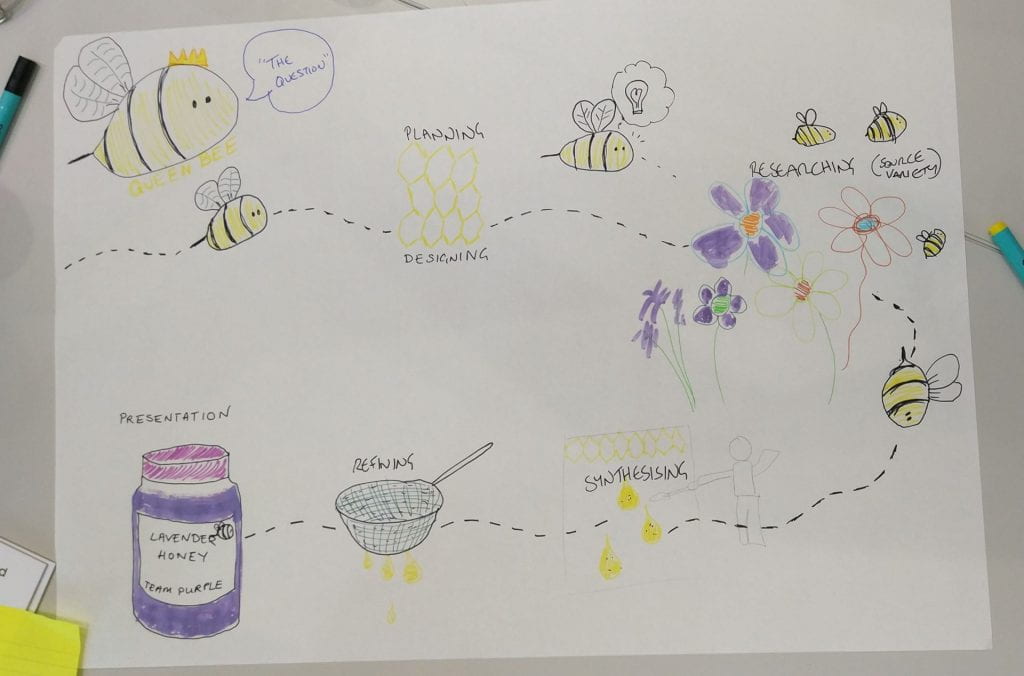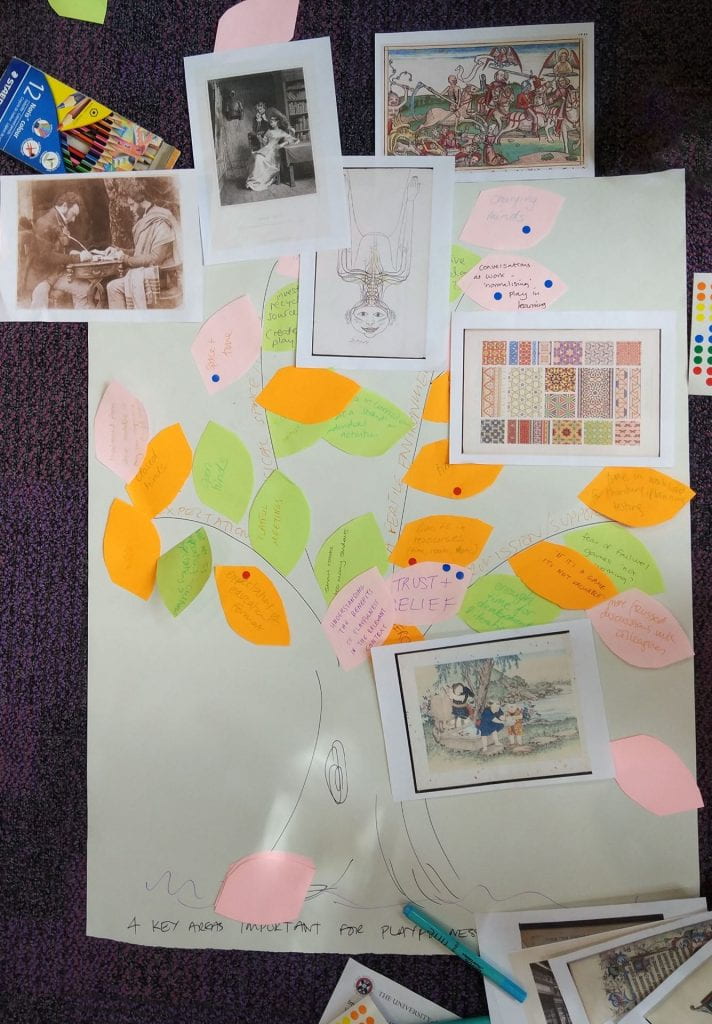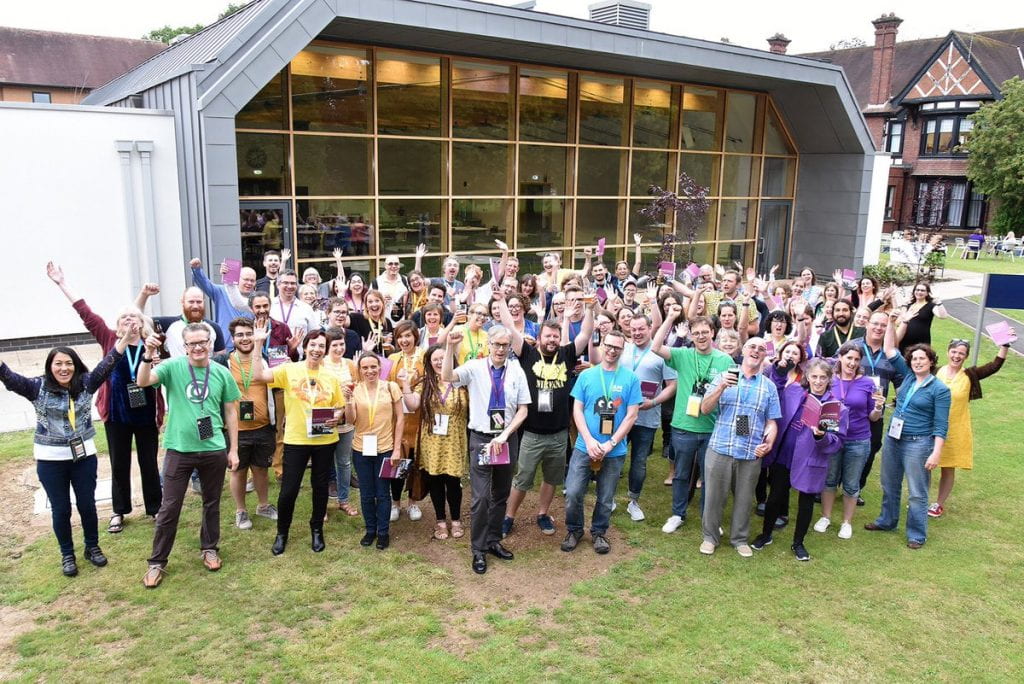On the 10th-12th of July I went to the Playful Learning Conference with Suzi Wells, to learn about different approaches to play in adult education and to present our own game.
It was a very lively conference. To the untrained eye, some moments of it looked like a bunch of adults had gone slightly mad and decided to go back to kindergarten to play with balloons and play dough and run around. To a more experienced observer, the attendants were learning about how others use play for learning, and using collaborative, playful ways to:
- describe the academic writing process

This is our team’s description. The queen bee gives the question. The small bee then goes away to think about it and interpret the question and plans how to answer it. It looks for flowers/ materials to read and then does the research, gathering what it needs to create their work. It then edits it and presents the result in a nice format.
- explore barriers and solutions to being more playful in work and education

According to our team, the most important barriers to play are expectations, limited time and resources. Solutions are to give time and space for playfulness and innovation, change mindsets and normalise play in learning, and get to a point where people trust and believe in it.
- solve the gender pay gap in Higher Education using one of 2 rapidly taught ethical theories.

Our team decided to use the theory of deontology to solve the gender pay gap in HE. There should be an equal amount of men and women in all kinds of posts, an equal amount performing all kinds of tasks, equal opportunities for promotion. For this to work properly, men and women should also do an equal amount of housework, spend an equal amount of time with their children, do an equal amount of emotional labour.

All genders should be included in this absolute equality, including those that do not identify as men or women (percentage arbitrarily chosen and subject to change to appropriately reflect society).
Our own session went better than we could have expected. All our room’s tables were full, and people were engaged with playing our game (working title: The Tiddlywinks of Teaching).

Attendants playing our game that helps think about inclusivity and accessibility when designing learning innovations.
They seemed to enjoy it and gave us very useful feedback. I would have been happy to keep talking to the participants about it for another hour. Also, I was very pleased to see some admittedly very happy faces when we told them they could take sets of cards with them!
A few things stood out for me at this conference:
- The vast majority of playful activities were physical, not digital.
- For many people engaging in playful learning, play = creativity. There were many sessions and activities where different creative processes – physical or digital – were used/ suggested to learn either about play itself, or as a tool to engage with different topics.
- Escape rooms have become quite popular in the area of playful learning. Their potential to help practice and enhance communication and teamwork skills, as well as to help in team building are easy to see. Their potential to learn domain-specific skills, not so much yet.
- Conferences such as this, that allow for more hands on sessions are an amazing way to playtest and get feedback for learning games. I am sure that our own game will greatly improve as a result of our session.
